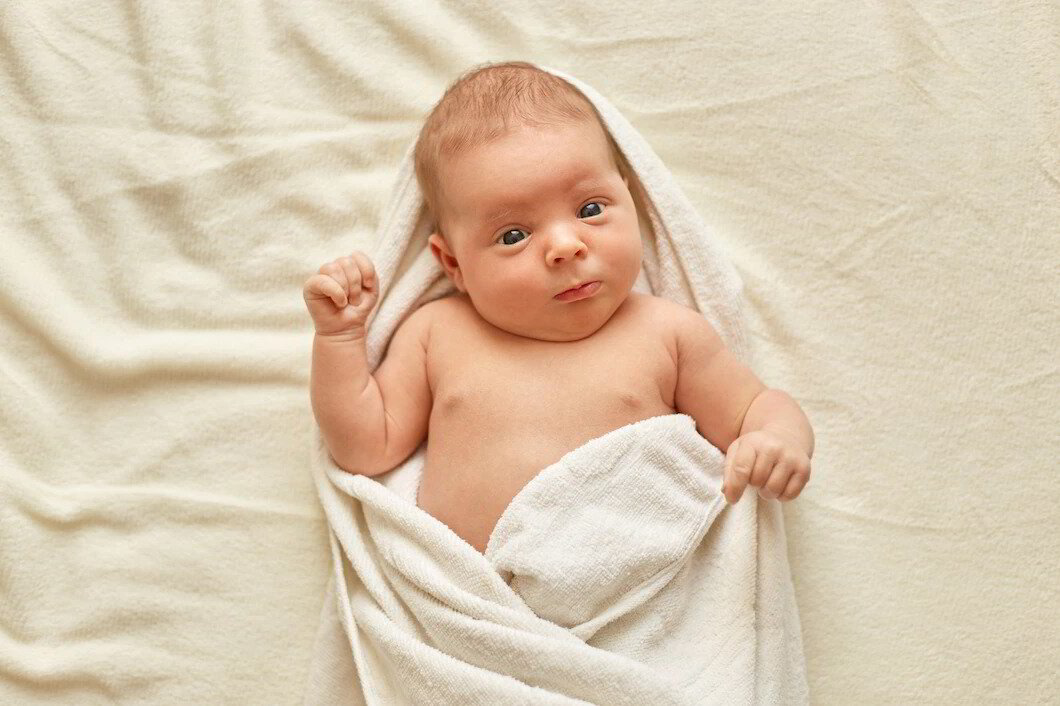
Table Of Content
Symptoms Of Milia
Milia are small, dome-shaped bumps that can be white or yellow in color. They’re not itchy and don’t usually cause pain for people who have them; however, some find discomfort when these bumps are exposed to rough sheets or clothing which irritates the skin. Though cysts are typically found on the face, lips, and eyelids they can also manifest in other areas such as your torso or genitalia.
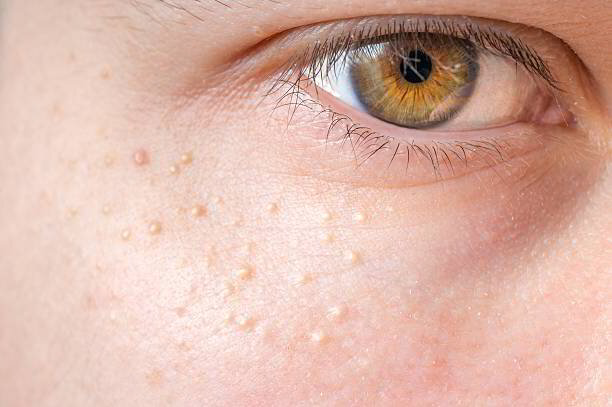
Causes Of Milia
Milia is a common skin condition in newborns without any known cause. Unlike baby acne, which typically occurs after birth from hormonal changes during pregnancy. Milia is a type of acne that doesn’t cause any inflammation or swelling. Unlike baby blemishes, which can be caused by things like stress and hygiene issues. When it comes to older children and adults, milia are typically associated with some type of damage to the skin. This may include blistering due to an underlying condition such as epidermolysis bullosa (EB) or cicatricial pemphigoid or porphyria cutanea tarda (PCT). Burns, long-term sun damage, long-term use of steroid creams and skin resurfacing procedures, such as dermabrasion or laser resurfacing can also cause cysts formation in adults. Milia is often a result of aging, but it can also develop when the skin’s natural exfoliation abilities fail.
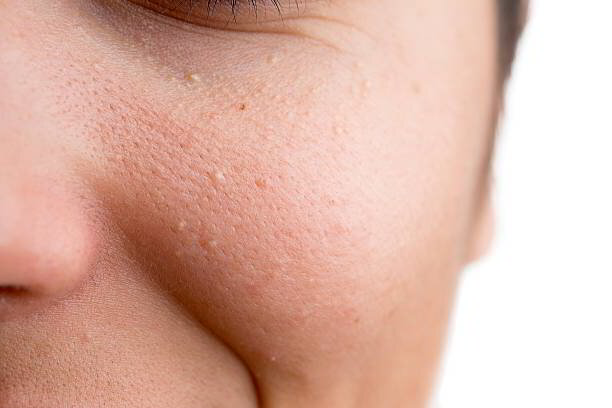
Types Of Milia
Milia are classified based on the age at which they form or what causes them to develop. They fall into two categories: Primary and Secondary.
- Primary: Primary milia are small cysts that form from entrapped keratin. These can be found on the faces of infants or adults, and their symptoms often go away without treatment because they’re not dangerous in nature. The formation process for these curious growths starts with an infection near your skin’s surface layer – this establishes inflammation and the swollen area becomes capsule-like due to enclosed spaces within its boundaries; thus cultivating tissue expansion until it reaches several millimeters deep into the dermis.
- Secondary: Secondary milia are similar to primary but develop after something blocks the ducts leading up top. This can happen from an injury, burn or blistering and they look similar but there’s one major difference – secondary milia only occur on top layers (epidermis) while primary ones will affect other parts too such as dermis/subcutaneous tissue below it.
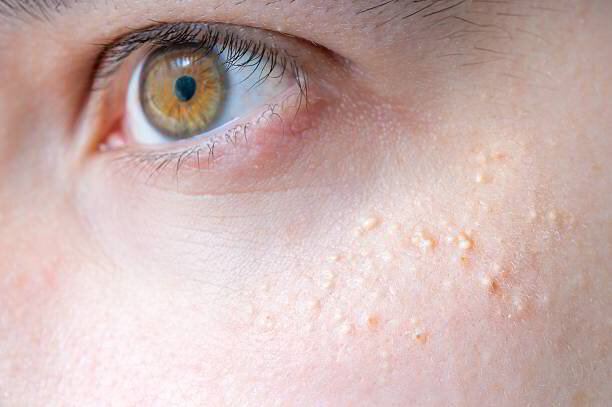
Treatment For Milia
Infant milia are small cysts that can be found on the skin. They don’t require any treatment and will clear up within a few weeks, but in some cases these pesky little bumps may cause discomfort for your child if left untreated-which is where treatments come into play!
The treatment includes:
- Cryotherapy: Liquid nitrogen is the most frequently used removal method for milia. It freezes these small bumps, which may then be manually removed by the dermatologist.
- Deroofing: The doctor will use a small needle to remove the contents of your cyst.
- Topical retinoids: Topical retinoids. These vitamin A-containing creams help exfoliate your skin.
- Chemical peels: Chemical peels are a popular treatment for those looking to rejuvenate their skin. The first layer of dead cells is removed, revealing new ones in the process!
- Laser ablation: Laser ablation is a safe and effective way to remove cysts in the most convenient manner. The small laser focuses on affected areas, destroying them without harming surrounding tissues or organs so there’s no need for invasive surgery!
- Diathermy: With extreme heat, the cysts will eventually break down and die.
- Destruction curettage: This is a procedure where the doctor scrapes and cauterizes cysts.
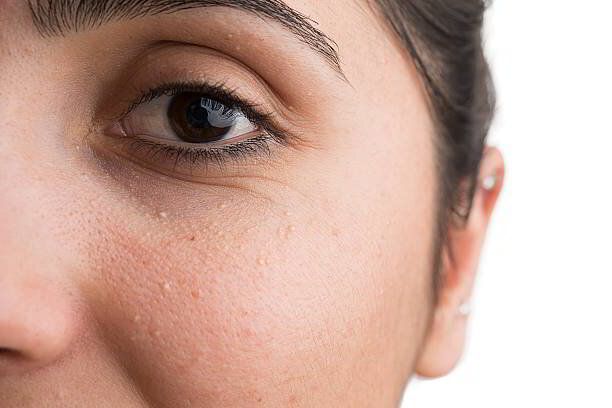
Prevention Of Milia
While it’s not always possible to prevent milia, for example when they occur in newborns-you can still take steps to limit their appearance.If you want to prevent milia, then it’s important that your skin stays hydrated and protected. Also keep these tips in mind:
- Avoid excessive exposure to the sun.
- Do not use thick creams or oil-based creams.
- Exfoliate your skin 2-3 times a week.
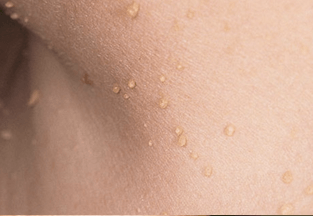
Conclusion
While the cause of small white cysts on the skin of children is unknown, it is recommended that parents take measures to prevent them from forming. The best way to do this is by keeping your child’s skin clean and free from oils and other debris. If you notice any cysts on your child’s skin, be sure to have them checked out by a doctor as soon as possible.
CONSULT DEMAMIRACLE
How To Prevent Small White Cysts On The Skin Of Children
ACT BEFORE IT’S TOO LATE
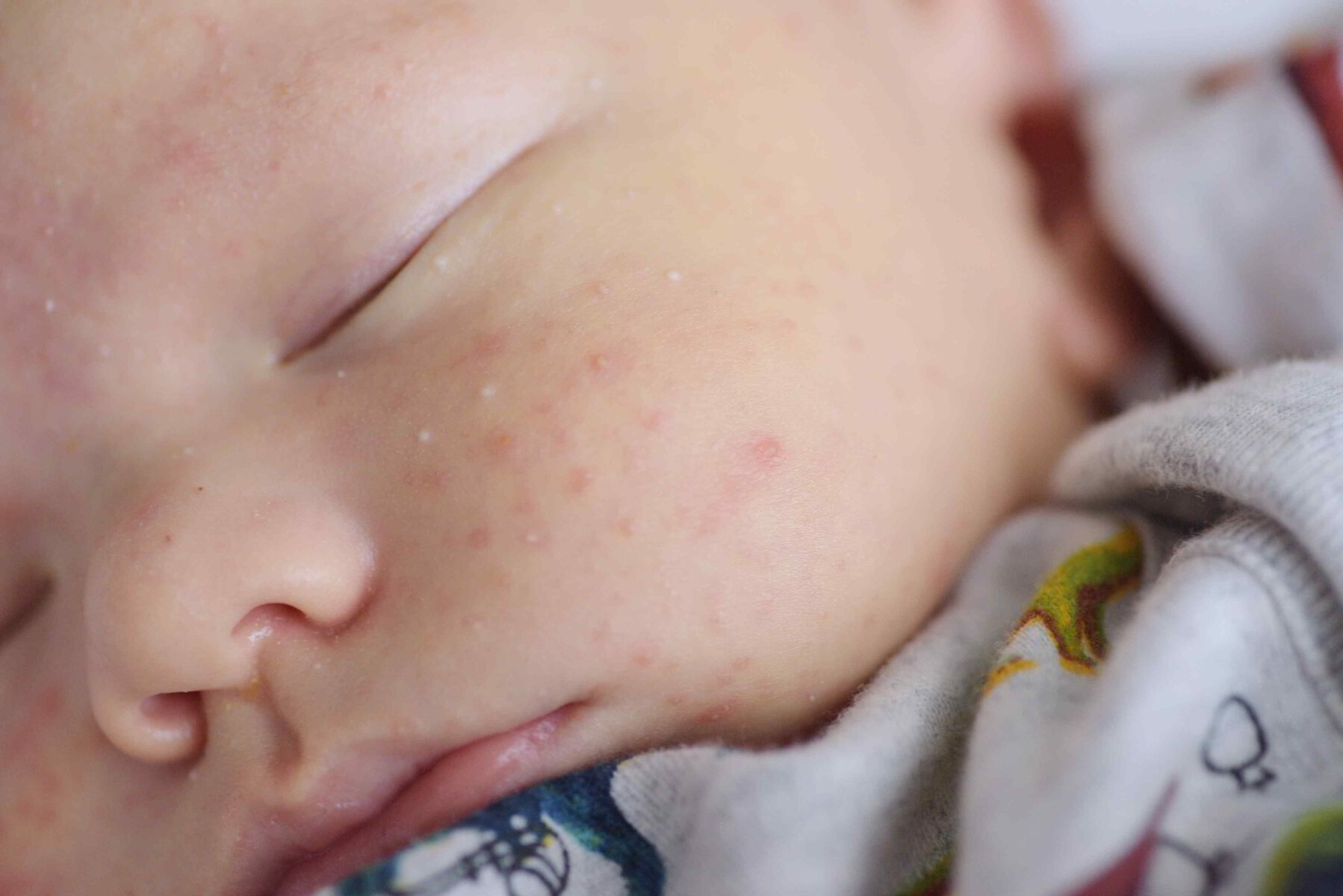
FREE CONSULTATION AVAILABLE
Contact Us
